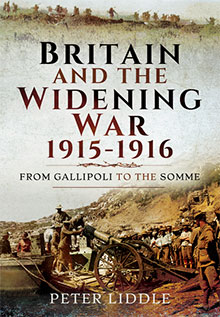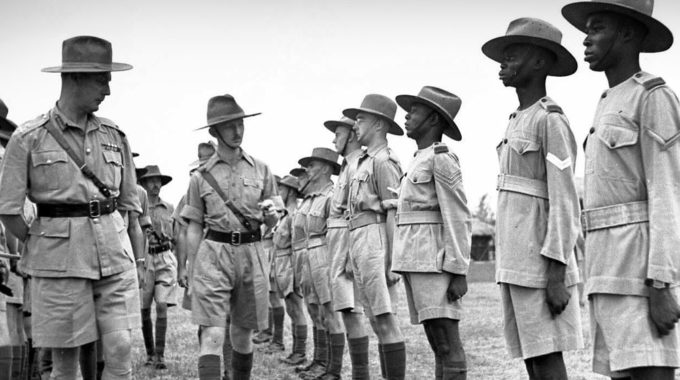Book Review: Britain and the Widening War 1915 – 1916, From Gallipoli to the Somme

Britain and the Widening War 1915 – 1916, From Gallipoli to the SommeEdited by Peter LIDDLEBarnsley, Pen & Sword Military 2016i – xiv 344 pp ISBN 978-1-47386-717-8 (hbk)
The joy of books for me is the range of titles available, and the differing purposes of books, so one can gain differing perspectives of a subject. There are several books that provide personal accounts of war service in the First World War, and others that analyse particular battles, but overall, few that cover the political and military strategic elements of the war. This book helps fill this void.
I admit that I particularly enjoy a book of this style, where several historians have contributed individual chapters, covering a range of issues. The twenty-one chapters cover a review of the Dardanelles and Gallipoli campaign, firepower and equipment in use with the British Army, German Command and Control during the Somme fighting, Facial Surgery, the effect of war on faith, and teenagers in war. With my particular interests in mind, I was very pleased to read the chapter on the Indian Army and the Mesopotamia Campaign.
Another advantage for me with a book of this style, is the ability to pick it up, and read one chapter at a time. You can be really anarchic, and read Chapter 14, followed by Chapter 2, and then 19 if you want to, as each Chapter stands by itself. To read the whole book remains important to gain the full context of the nature of the First World War in this period. All the authors of chapters are distinguished academics in their field, and include Peter LIDDLE himself, Duncan REDFORD, Gary SHEFFIELD, and Robert JOHNSON.
There are eighty photographs included, each one supports the subject of a chapter. There are many I have not seen before, and the quality is good. On the rear of the book it states, ‘Explores key issues such as leadership and command, valour, conscientious objection, military medicine, the Home Front, the role of women, grief and bereavement, the archaeology of the war’, and having read the book twice, I agree fully. In short, a great book, and a thought provoking, yet enjoyable, read.

